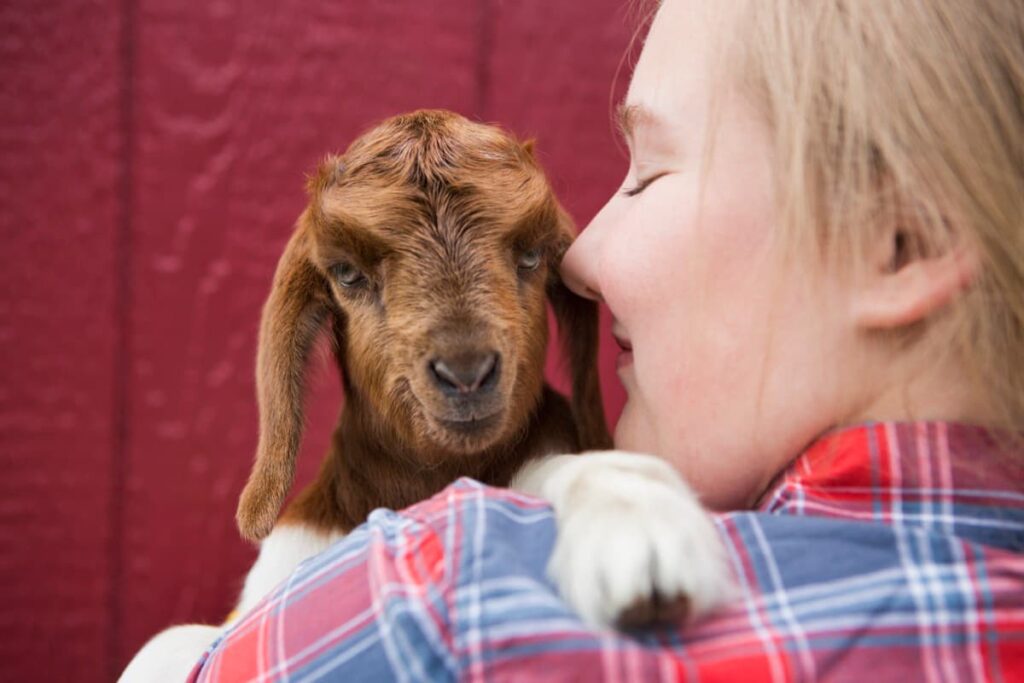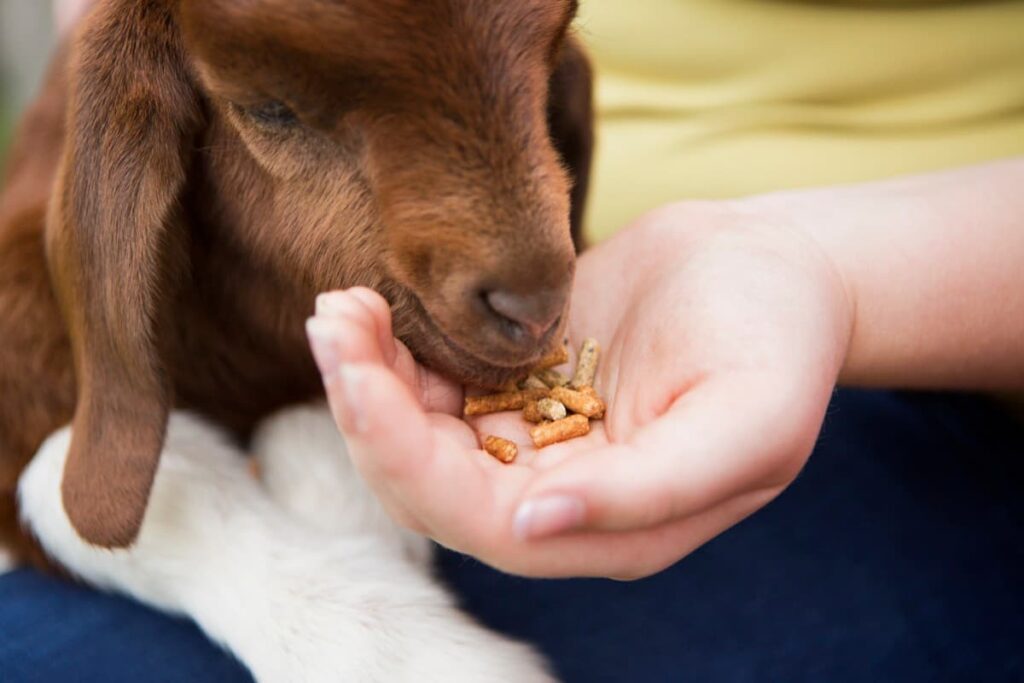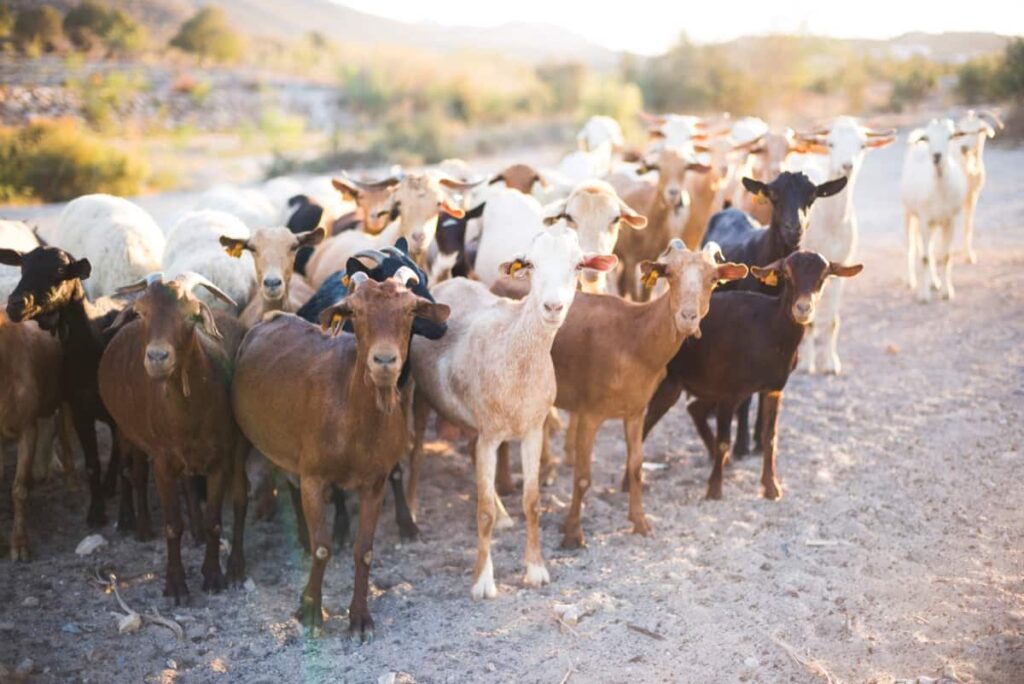The Kalahari Red is a relatively new goat breed that was developed in South Africa. This breeding program aimed to create a goat breed that would thrive in the arid and semi-arid regions of Southern Africa. These goats are raised for their meat production and adaptability to harsh climates. Goats require less space and feed, making them an excellent choice for small-scale farming operations. The profitability of commercial Kalahari Red goat farming can be high if managed properly since their demand exceeds supply.

Kalahari Red Goat Weight
- For Kalahari Reds, their bucks weigh about 115 kg on average, while does can weigh around 75 kg. This weight range makes them a good choice for meat production.
- Genetics plays a big role in determining these goats’ size and growth rate. Proper nutrition and management also contribute to their overall health and development.
- You must provide your Kalahari Red goats enough food and water daily to maintain their body condition score (BCS). A balanced diet with roughage, protein, minerals, and vitamins is crucial for optimal growth and performance.
- In addition to nutrition, managing stress levels in your goats can help improve weight gain. Ensuring they have adequate space, a proper ventilation system as well as clean bedding all aid in reducing stress levels, among other environmental factors.
- Monitoring the weights of your Kalahari Red goats regularly will alert you if there are any underlying conditions affecting growth rates or if they require additional feeding strategies.
Housing and Fencing Requirements for Kalahari Red Goat Farming
As a farmer, you are responsible for ensuring the housing structures are adequate to keep your goats comfortable and safe from extreme weather conditions. The structure size should depend on the number of goats you intend to rear. The house should be well-ventilated and spacious enough for them to move around freely without feeling confined. You can construct the shelter with locally available wood or metal sheets.
Fencing is also an essential requirement in goat farming since it plays a crucial role in keeping predators away while preventing escape attempts by your goats. You can use electric wire fences, woven wire mesh, or wooden posts when setting up your fence. Inspecting your fence regularly for any damages and immediately making necessary repairs is always important.
Providing proper housing facilities coupled with strong fencing systems will go a long way in improving the productivity of your Kalahari Red goat farm while ensuring their safety and comfort at all times.
Is Commercial Kalahari Red Goat Farming Profitable?
- Commercial Kalahari Red goat farming can be profitable for farmers willing to invest their time and resources. The breed’s ability to adapt well to harsh environments makes them an attractive option for farmers in arid areas.
- One of the main advantages of raising Kalahari Reds is their fast growth rate, which means they are ready for the market at a younger age than other breeds. This translates into faster returns on investment for farmers.
- Another factor contributing to the profitability of commercial Kalahari Red goat farming is the high demand for their meat, which has become increasingly popular due to its nutritional benefits.
- Today, the Kalahari Red is recognized as one of South Africa’s most important goat breeds and has gained popularity outside its home country due to its high-quality meat production.
In case you missed it: Best Meat and Milk Goat Breeds in India: Considering these Goats in Commercial Goat Farming Business

Kalahari Red Goat Breed Characteristics
- The Kalahari Red goat breed is highly valued in South Africa because of its meat production capability. They are known for their ability to thrive even in harsh and arid environments. These goats have a unique characteristic that sets them apart from other breeds and a distinctive reddish-brown coat color that makes them easily identifiable.
- In addition to their unique appearance, the Kalahari Reds possess some impressive physical traits. Their bodies are well-muscled, making them ideal for producing lean meat with excellent taste and texture. They also have strong legs and feet, allowing them to move freely on rough terrain.
- One of the most appealing characteristics of these goats is their adaptability to different climates. The Kalahari Reds can withstand extreme temperatures ranging from hot summers to cold winters without compromising their health or productivity levels.
- Goats require less space and feed, making them an excellent choice for small-scale farming operations. The profitability of commercial Kalahari Red goat farming can be high if managed properly since their demand exceeds supply.
Feeds and Nutrition Needed for the Kalahari Red Goats
- Feeding and nutrition are critical to the health and productivity of any animal, including Kalahari Red goats. These animals require a balanced diet that meets their nutritional requirements for optimal growth, reproduction, and maintenance.
- Kalahari Reds are browsers by nature; they prefer woody plants over grasses. They can also graze on the grass if it’s available in abundance. A combination of browsing material and grazing areas is essential for proper feeding.
- The primary nutrients needed by these goats include proteins, carbohydrates, fats, vitamins, minerals, and water. Fats serve as an additional energy source when carbohydrate intake is low or insufficient. Vitamins ensure proper enzyme function, while minerals maintain structural integrity in bones, among other functions.
- Feeding schedules should be established based on age groupings to prevent underfeeding or overfeeding, which can lead to obesity or malnutrition-related issues. In addition to correct feed supplies with good protein content consisting of hay or alfalfa pellets supplemented with fresh fruits, mineral blocks should always be provided along with access to clean drinking water at all times.
Disease Prevention and Control Measures in Kalahari Red Goats
- The Kalahari Red Goat is a breed that provides numerous benefits to farmers. They are hardy, low-maintenance, and produce high-quality meat. However, it’s important to note that these goats must be given proper care to thrive.
- One of the key aspects of caring for your Kalahari Red Goats is disease prevention and control measures. You must keep your herd healthy by practicing good hygiene on the farm, providing adequate nutrition, and ensuring they receive regular veterinary check-ups.
- By implementing good management practices such as regular vaccination programs and monitoring their health closely, you can help prevent diseases from spreading among your herd. Additionally, quarantining sick animals immediately can help reduce the risk of transmission.
In case you missed it: Goat Breeding and Genetics for Improved Productivity and Disease Resistance

Conclusion
The Kalahari Red Goat breed is originally from South Africa, where it was developed specifically for meat production. The Kalahari Red Goat is well known for its adaptability to harsh environmental conditions such as drought and poor-quality pastures. This means they can thrive in areas where other breeds may struggle to survive.
- Types of Grass Growing for Goat Farm
- How to Train Goats for Milking: A Beginners Guide
- Goat Milking Practices and Equipment: A Beginner’s Guide
- Goat Farming for Fiber: Producing Mohair and Cashmere
- Maximizing Goat Milk Production: Tips for Dairy Goat Farmers
- Goat Farming as a Family Business: Strategies for Success
- Profitable Kenya Goat Breeds for Commercial Dairy and Meat Business
- Unlock the Secrets of Oberhasli Goat: Discover Raising and Management Practices
- Ultimate Guide to Myotonic Goats: Explore Profile to Raising
Nice information.
Would love to have a few of these they sound great. Hopefully they will make it to North America
Hello there, please share more information. I would like to keep kalahari red. Based in BW
i would like to buy kalahari goats
i am staying in limpopo polokwane anyone who can sell me kalahari ram please
I need to buy Red Kalahari goats . Please provide me some details of sellers in India
To Srl lanka
thanks
Hi I need to purchase a young Kalahari red ewe any recommendations